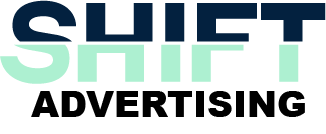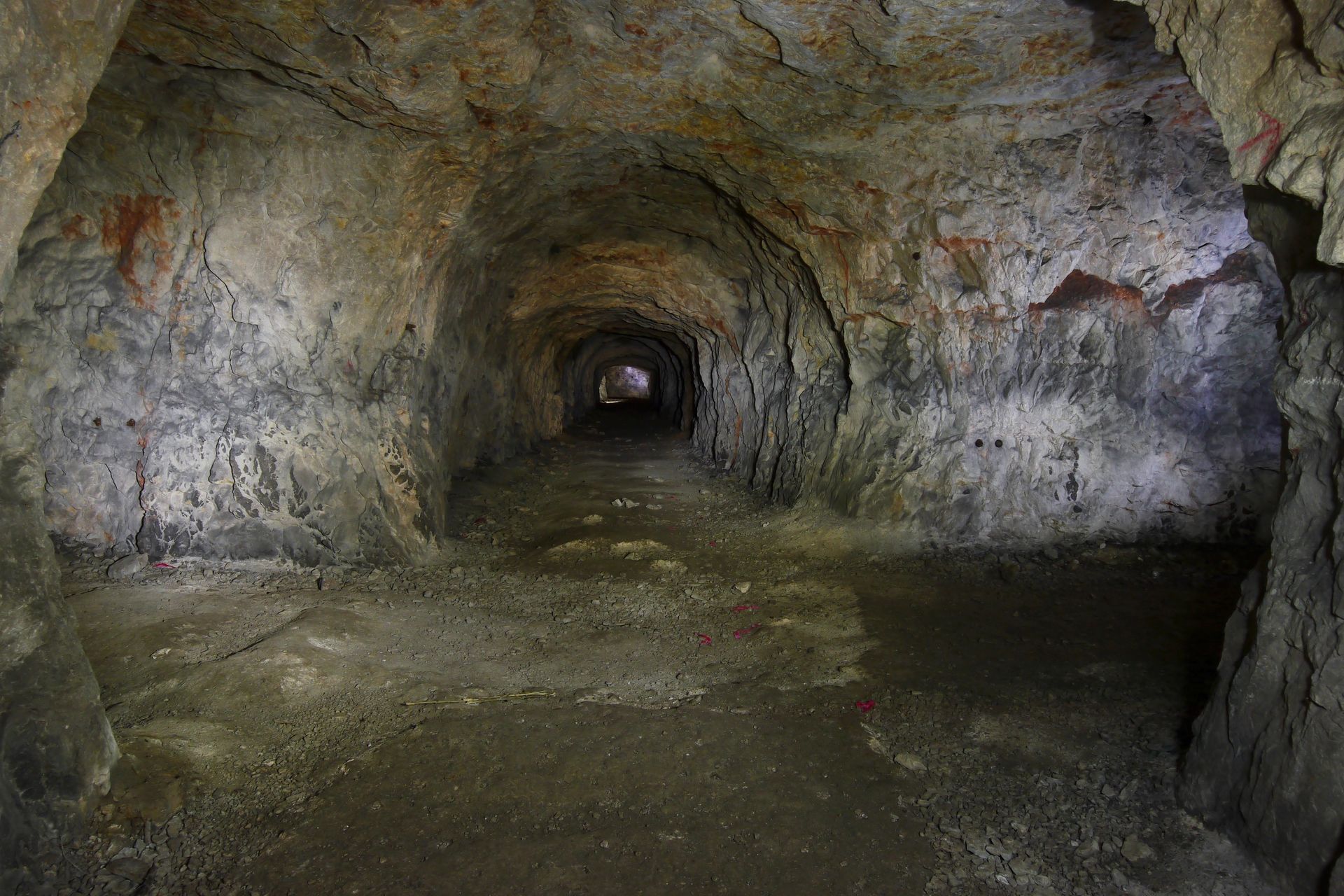
In the 1980s and 1990s, when I learned how to sell, salespeople had the upper hand. We controlled the information, there were no websites, and it was hard to comparison shop. Then, the Internet and Google flipped the balance of power, empowering businesses and buyers alike. Now, buyers had the information at their fingertips if they chose to invest the time to research it. This marked the beginning of a new era, an age of Google search and Google ads, where businesses had the opportunity to provide the most and best answers to prospects, leading to meaningful engagements.
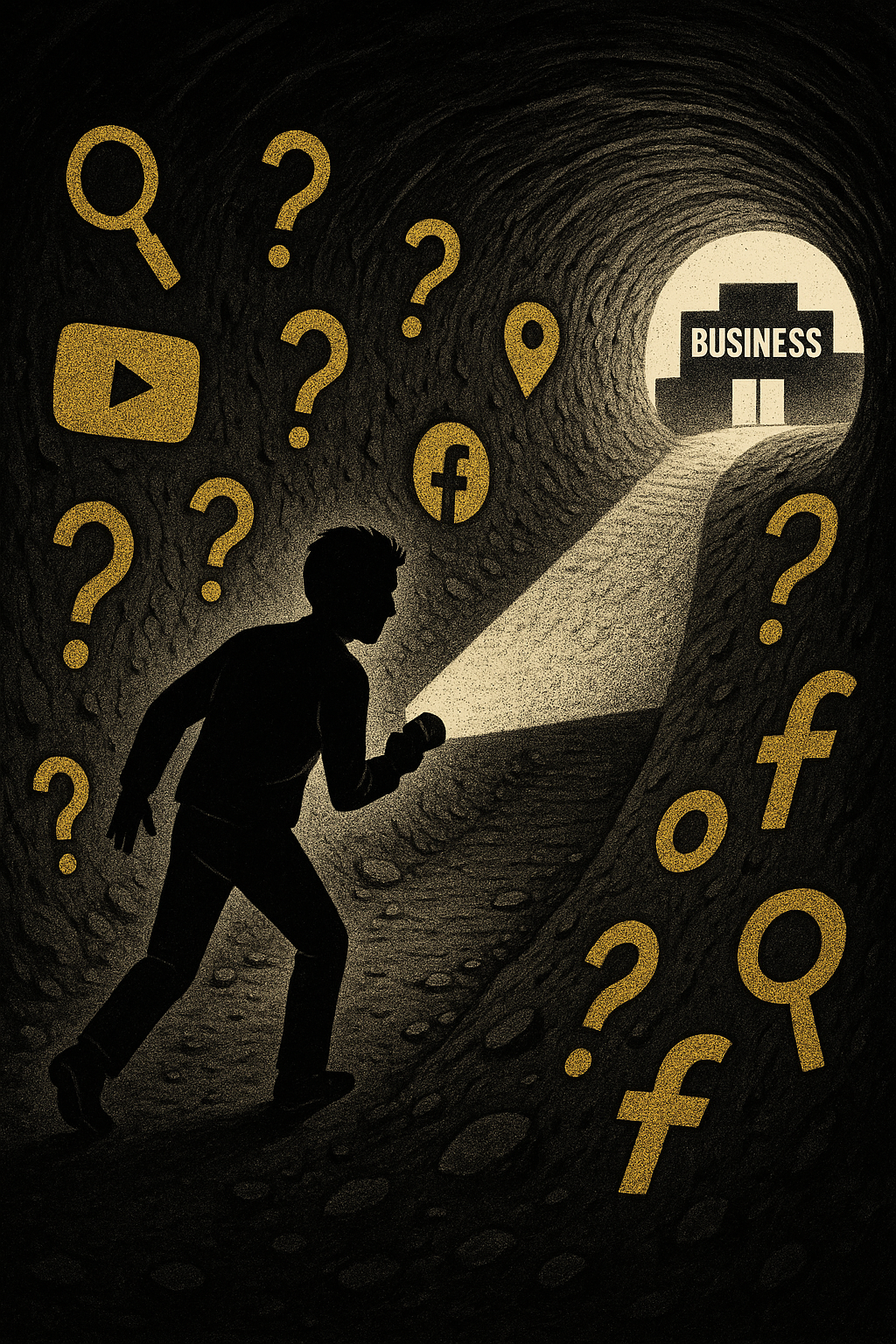
As our prospective customers got better at shopping and comparing they got better at doing it anonymously. I refer to this as the “dark tunnel”. These are prospects that are digging for information. They're uncovering differences, they're asking about us, and we don't know who they are. Other folks have referred to this as dark search or dark research. But I think a tunnel is a better metaphor because the tunnel implies direction and effort and at any point you can dig upwards and pop your head out to see where you are (and other people can see you). Meaning that the companies you've been investigating, once you pop out of the tunnel, can identify you because you've been on their website, you've filled out a form, you've put in a phone call, or any other number of ways that you can indicate intent.
Once a business can identify you as a prospective customer you're now in their sales funnel. And traditional sales funnels start at the top with some level of intent in need of qualification. Then there's some level of engagement measured different ways by different companies. And finally there's closing or forecasted closing activity that includes things like proposals and quotes, etcetera.
What we've witnessed, especially in the last 10 years, has been that dark tunnel getting longer and the sales funnel getting flatter and shorter. Our prospects go longer and longer without talking to us, without engaging with us. And when they do engage, the sales time - the actual time engaged with salespeople and the company - has become shortened.
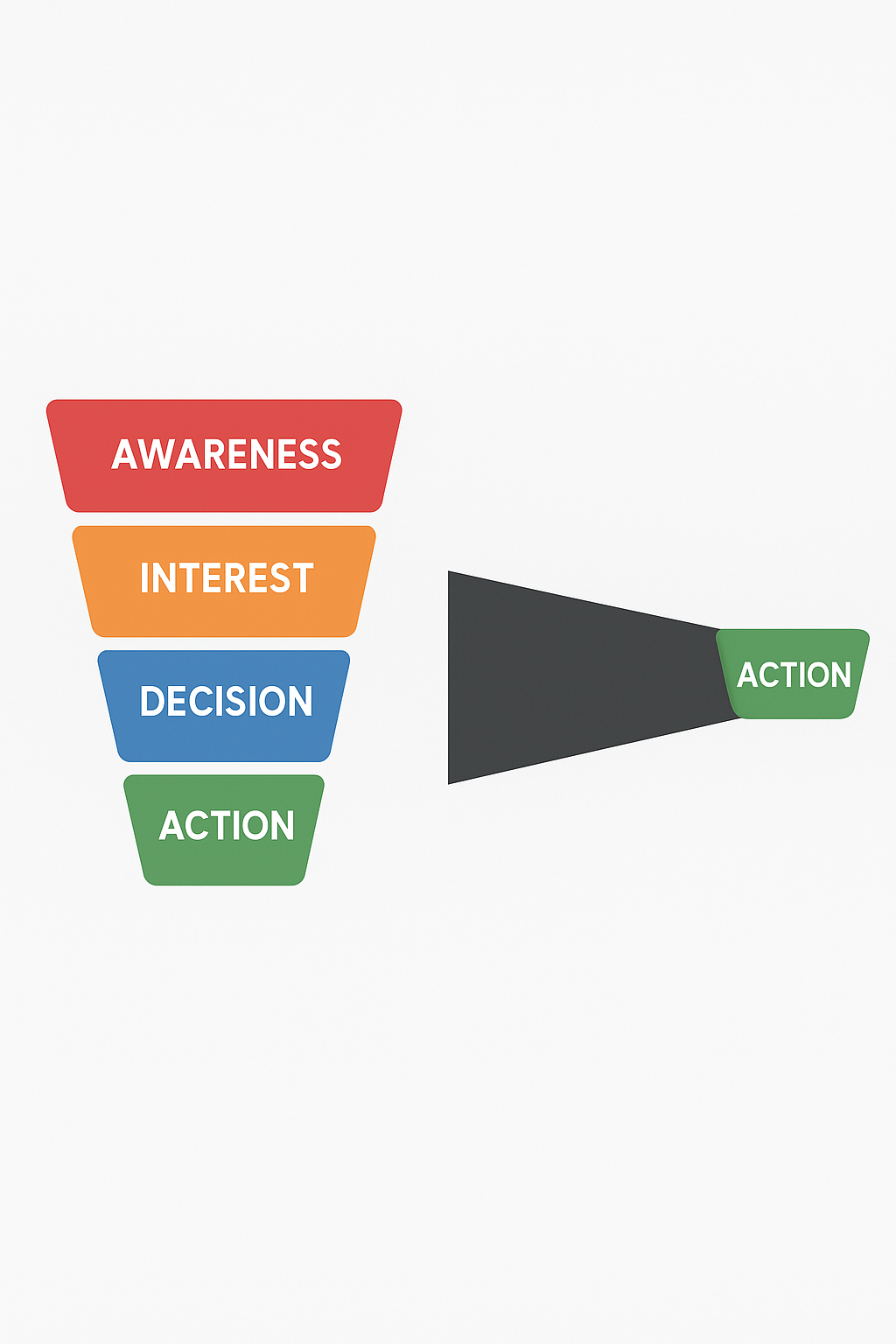
So why is that a bad thing? Our prospects are doing their own research, they show up ready to buy, they don't waste a lot of sales people's time - the whole process moves faster (or seems to).
However, this trend is not necessarily beneficial for all businesses. If you're the dominant player in your category, these longer 'dark tunnels' and shorter sales funnels can work in your favor. But if you're not dominant, these trends, coupled with the rise of AI-driven search and the costs associated with staying relevant to these AI models, can put you in a precarious situation.
If your business doesn't have the time talent or treasure continually compete in the AI information models you are going to suffer awareness and lose ability to influence the brand decisions of those prospects who are in the dark tunnels. They won't know who you are and you won't know that they're looking for what you do or sell. So what do you do?
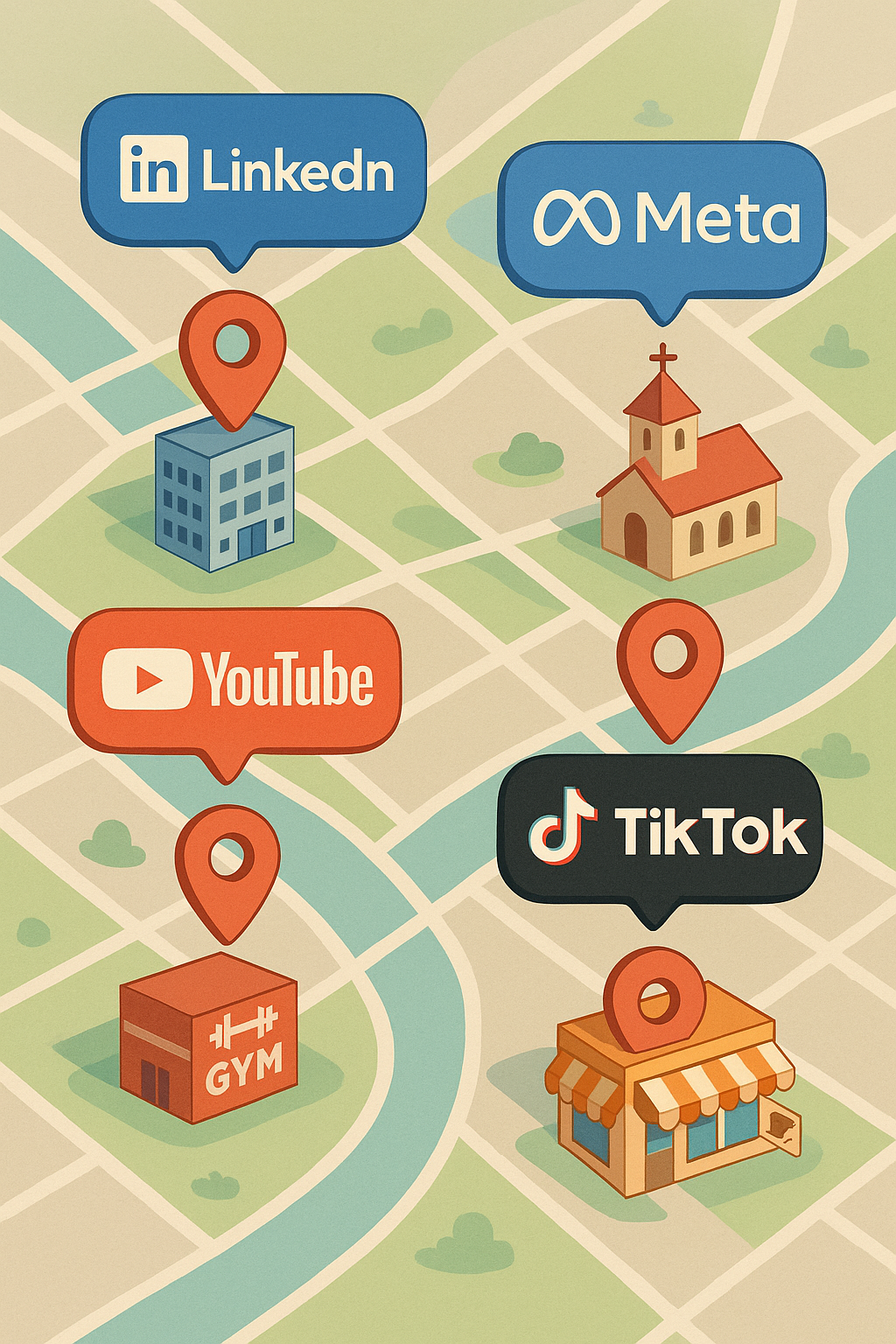
Where are your prospective customers?
My suggestion is rewind. Go back to the 1980s and 1990s before Google and search ate the marketing world. If your prospects aren't necessarily looking for you, or if they're in dark tunnels and wouldn't find you even if they were looking because of the aforementioned competitive nature of AI driven search, then think about advertising.
Where are your prospective customers? Where are they in real life? Where do they work play or pray? If you know where they are in real life you can advertise to them. If you can get them to visit your website anonymously you can then reach them in the walled gardens of LinkedIn, Meta, YouTube, TikTok, through the magic of retargeting.
If you're in a B2B space can you get an e-mail list and then advertise to those individuals on the e-mail list. Or capture them at a trade show, or at the office.
The dark tunnels are getting longer. The sales funnels will continue to get flatter and shorter. If you need to influence prospective customers to your brand, they need to see your brand and know that you exist, and advertising might be the most effective way to do that.
Before I end this post, I want to point out the unsaid and maybe not very obvious. Advertising is not the direct-response of search or even form-driven response that you see in Meta or LinkedIn. Advertising creates the awareness in the dark tunnel, and your prospect still needs to use that awareness in making a decision to interact with you via an e-mail, a form, a phone call, or a walk in. If all you are measuring in your marketing is the last click, or last interaction, to see what is effective, your brand is going to get lost in this new world.
Digital advertising and the techniques to build your audience have evolved significantly in the last 10 years. It's crucial for businesses to understand and adapt to these changes. At Shift Advertising, we specialize in helping our clients navigate this evolving landscape, reaching their audience without the cost or restrictions of the walled gardens. We use targeted, direct, and precise digital advertising tools. If you'd like to learn more about how we can help your business, drop us a line.





